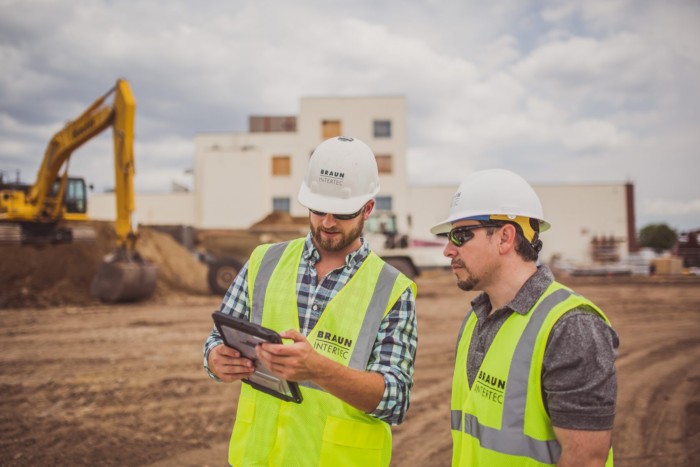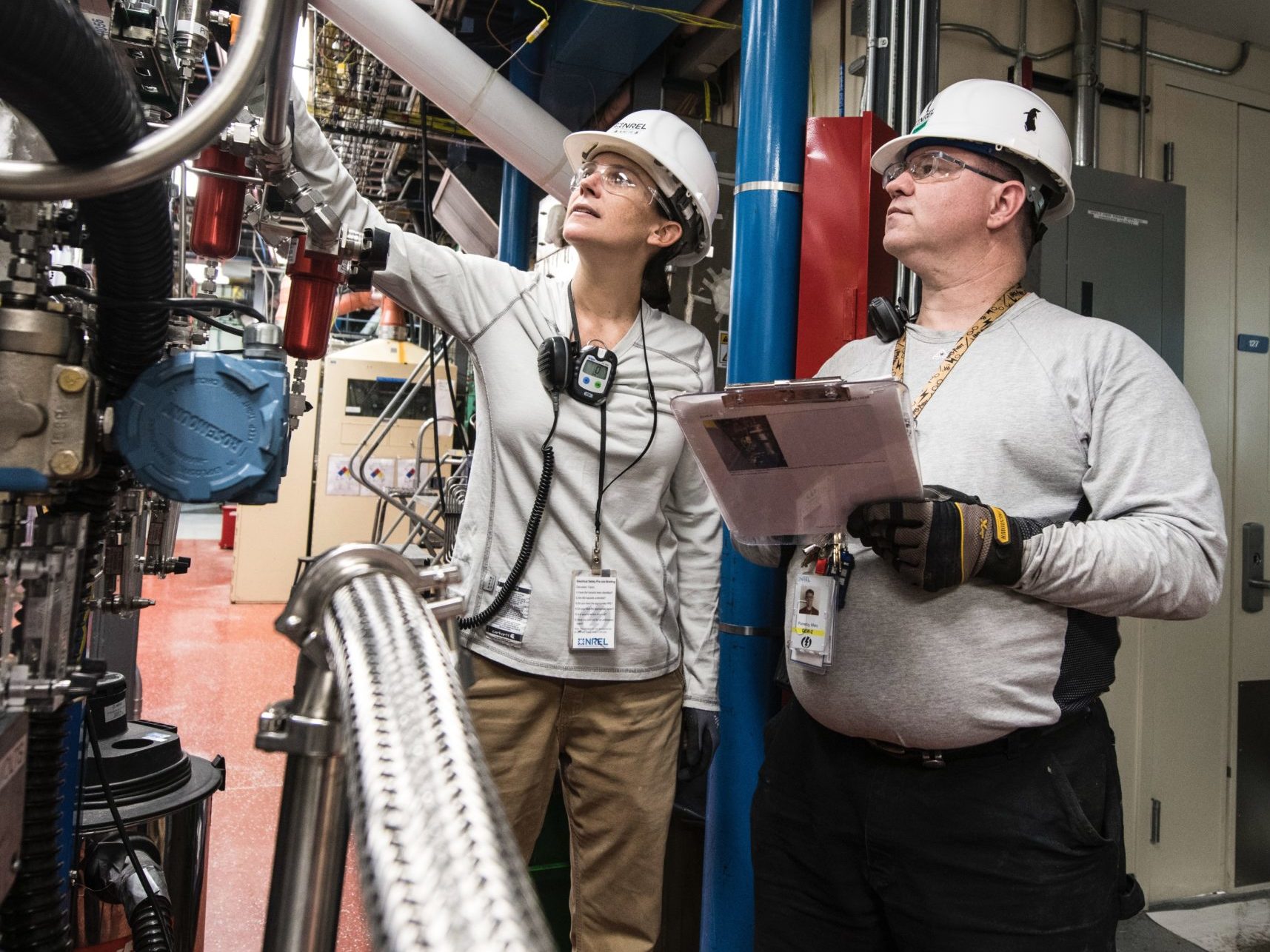Fads Influencing the Future of Geotechnical Eng Practices
Wiki Article
An In-depth Review of the Trick Responsibilities of Geotechnical Designers in Site Characterization and Ground Improvement Techniques for Engineering Solutions
Geotechnical designers are important to the successful execution of design tasks, entrusted with the important responsibilities of website characterization and the application of ground renovation techniques. Their work includes a complete evaluation of subsurface problems, utilizing different testing methods to determine dirt and rock residential properties. This foundational understanding not only informs style choices however also minimizes possible dangers connected with ground instability. As we discover the diverse roles of these specialists, it ends up being obvious exactly how their knowledge shapes the safety and security and performance of design solutions. What certain techniques and analyses attract attention in this crucial self-control?Role of Geotechnical Designers
Geotechnical designers play a pivotal duty in the design and building of facilities by analyzing the behavior of soil and rock under the surface area - geo tech engineering. Their duties incorporate examining subsurface conditions to notify design decisions that make sure structural stability and safety and security. By performing comprehensive evaluations of soil residential or commercial properties, consisting of shear strength, permeability, and compressibility, geotechnical designers provide crucial data that influences the choice of appropriate building products and methodsAlong with assessing soil mechanics, geotechnical designers are tasked with identifying possible hazards such as landslides, sinkholes, and ground settlements. Their proficiency aids alleviate threats linked with these geotechnical phenomena, thus safeguarding both the atmosphere and public security. They additionally collaborate very closely with other design techniques, making sure that geotechnical considerations are incorporated into general project style.
In addition, geotechnical engineers engage in the analysis of existing structures, offering recommendations for retrofitting and fixings when needed. Their extensive understanding of soil-structure interaction is crucial for the advancement of sustainable framework options. In general, the function of geotechnical designers is essential to the effective realization of construction projects, ensuring they are safe, resilient, and compliant with regulatory requirements.

Site Characterization Processes
Effective website characterization processes are necessary for recognizing the subsurface problems that affect task style and implementation. Geotechnical designers utilize a systematic method to gather, review, and analyze information regarding groundwater, dirt, and rock features. This process starts with a thorough evaluation of existing literary works and archaeological site information, supplying understandings right into previous website problems and possible challenges.
Data analysis follows fieldwork, where engineers make use of geostatistical approaches to interpret findings and create geological versions. Through diligent site characterization, geotechnical designers lay the groundwork for successful job execution, lessening unpredicted complications and maximizing resource allotment.
Dirt and Rock Testing Approaches
While understanding subsurface problems is essential, the option of ideal soil and rock screening methods is equally important for exact analysis and style. Geotechnical designers employ a range of screening strategies to evaluate the mechanical and physical properties of dirt and rock materials.Research laboratory examinations, such as Atterberg limitations, grain size evaluation, and unconfined compressive stamina tests, supply essential data on dirt behavior under various wetness problems and filling circumstances. These tests aid figure out dirt category and anticipate negotiation or shear toughness features important for foundation style.
In-situ screening methods, consisting of Standard Penetration Tests (SPT), Cone Infiltration Tests (CPT), and pressure meter examinations, allow designers to collect data directly from the ground. These methods use useful understandings right into the dirt's density, uniformity, and stratification without the need for substantial sampling.
Rock screening normally entails core tasting and laboratory evaluation to assess residential properties like uniaxial compressive toughness and rock high quality classification (RQD) With each other, these dirt and rock testing methods allow geotechnical designers to make educated decisions concerning site-specific obstacles, making sure the safety and security and stability of design remedies.
Ground Renovation Methods
Ground enhancement methods are essential for improving the engineering residential or commercial properties of soil, consequently raising its load-bearing ability and reducing settlement. These approaches are critical in dealing with obstacles provided by problematic or weak dirts, which can substantially impact the security and durability of frameworks.Various ground improvement strategies are employed, consisting of compaction, grouting, and soil stabilization. Compaction includes boosting the density of soil via mechanical methods, which improves its shear toughness and decreases compressibility. Grouting, on the various other hand, includes injecting a liquid material right into the ground to load spaces and improve dirt communication. This strategy is particularly reliable for dealing with loosened sands or fractured rock.
Soil stablizing encompasses a series of techniques, from chemical ingredients to mechanical therapies, aimed at enhancing the soil's resistance to erosion and deformation. Strategies such as lime stabilization or cement blending alter the residential properties of the soil at a fragment degree, boosting its total efficiency.
Relevance of Geotechnical Analyses
Geotechnical analyses play a vital duty in the planning and style of engineering jobs, as they offer crucial information regarding the subsurface problems. Comprehending soil buildings, rock developments, groundwater degrees, and possible geohazards is vital for making certain the stability and security of frameworks. These assessments enable engineers to make educated decisions relating to site selection, layout specifications, and building and construction methodologies.
The importance of geotechnical additional reading evaluations prolongs beyond preliminary project stages; they contribute in danger administration and cost effectiveness. By determining possible concerns early, such as dirt settlement, incline instability, or excessive groundwater, designers can develop suitable reduction methods, decreasing the probability of pricey here hold-ups and architectural failures. These evaluations support compliance with regulatory demands and enhance the sustainability of design practices.

Final Thought
In conclusion, geotechnical engineers are vital to ensuring the security and security of design jobs with detailed site characterization and ground improvement strategies. geo tech engineering. Their systematic strategy to analyzing subsurface conditions, integrated with their recommendations for effective ground adjustment, dramatically boosts dirt homes and load-bearing ability. The competence of geotechnical designers not just promotes enlightened job planning however also makes sure conformity with regulations and promotes effective interaction amongst stakeholders, ultimately adding to successful engineering outcomesGeotechnical engineers play a crucial function in the design and construction of facilities by examining the behavior of dirt and rock below the surface area. By carrying out detailed analyses of dirt buildings, including shear permeability, strength, and compressibility, geotechnical designers give vital data that affects the choice of appropriate building materials and strategies.
In enhancement to evaluating dirt mechanics, geotechnical designers are entrusted with identifying prospective dangers such as landslides, sinkholes, and ground settlements. Geotechnical engineers use a systematic have a peek at this website strategy to collect, examine, and translate data concerning dirt, groundwater, and rock attributes. By determining prospective issues early, such as dirt settlement, incline instability, or excessive groundwater, engineers can develop proper reduction strategies, minimizing the probability of costly delays and structural failings.
Report this wiki page